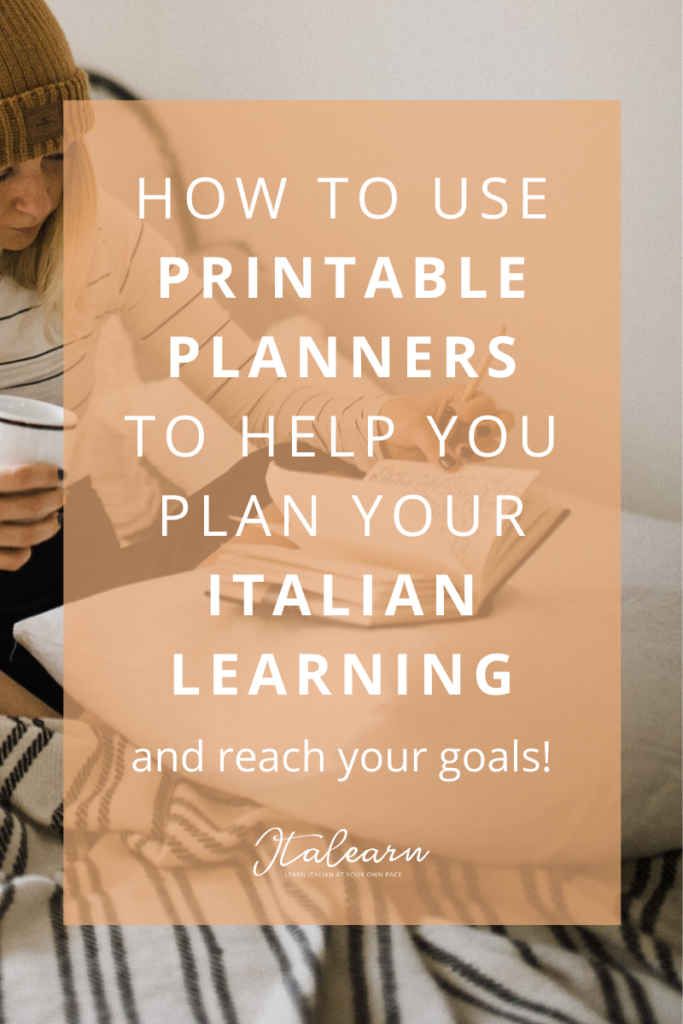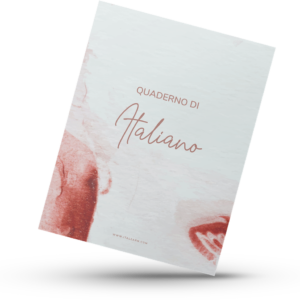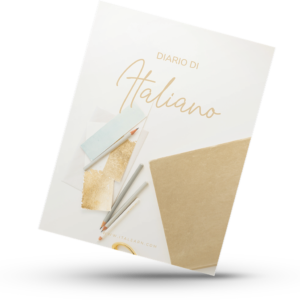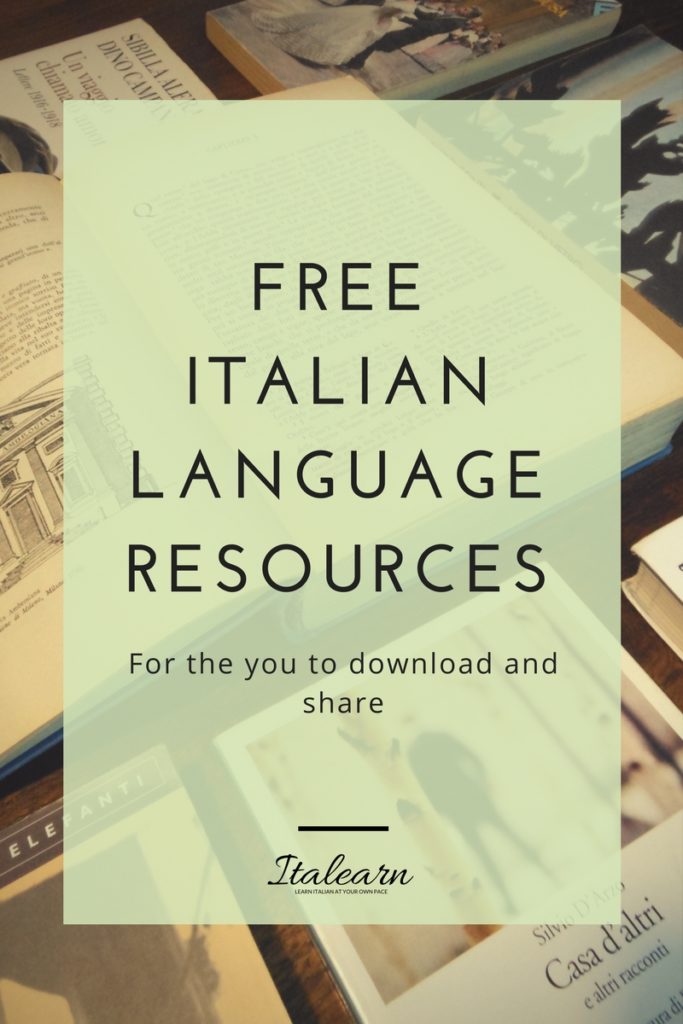Let’s do a not-so-funny round of questions before I tell you how to use printables to organize your Italian learning routine:
- Did you remember to moisturize today?
- Did you remember to drink at least 8 glasses of water today?
- Did you remember to make your bed?
- Did you remember to meditate for 15 minutes this morning?
- Did you remember to unload the dishwasher?
If you replied no to most of those questions, then we have something in common. I really try hard to stay organized and take on good habits, I do. But most of the times I fail, and that’s because I don’t create (and use!) a system that works for me.
Why using a system in language learning
I’ll keep it simple: because it works. Is it convincing enough? ‘Cos I thought it was 🙂 but I’m going to expand on this concept, I think it’s worth it.
In my experience as both a language student and teacher I have seen major improvements when the learning experience was well organized and consistent.
When you go to school/university it’s easier because you are already studying within a system. But when you learn a new language as an adult, maybe on your own, things are radically different.
You, actually no, we love to have everything figured out and we think that once that’s done we’re more than halfway there. The problem is… we’re not.
Setting a goal, unfortunately, is not enough, we have to follow through with real commitment. That’s the hardest part: being committed to work for a goal. And here is when a system can come in handy.
What I mean by system in our language learning context embraces a variety of different things that we need to consider:
- Time that we can dedicate to learning Italian (how many minutes/hours every day/week for an x number of weeks/months, at what time of day)
- Materials (written, audio, video, authentic, created for students, etc.)
- Tools and apps (pen and paper, tablet, laptop, smartphone, journal, calendar, books, textbooks, recording app, vocabulary app, etc.)
- Intentions and motivation (what I want to learn and why)
- Goals (what I want to achieve and when)
This list is generic, of course everyone has a different experience, so if you don’t consider all these things, or you focus on something else, that’s ok. If you could take all the items in the list and write down your “answers” you would basically have the blueprint of your Italian learning system.
Let’s see a practical example of how to use printable planners to organize your Italian learning
Going through unexplored land is scary, even Dante said it:
nel mezzo del cammin di nostra vita
mi ritrovai per una selva oscura
ché la dritta via era smarrita
Midway upon the journey of our life
I found myself within a forest dark,
For the straightforward pathway had been lost
(complete translation here)
So what happens to him? He finds a guide, Virgilio, and together they go.
While I am not even remotely comparing myself to Dante, I think this example is timeless: there is a point when we need guidance and we need systems. I do offer guidance to Italian learners, but it’s not our main focus here. Let’s go back to planning.
The elements in the list a few paragraphs above are going to be the pillars from which we’ll build our planners:
- Time
- Materials
- Tools
- Intentions
- Goals
You don’t need to be too fancy, just use a planner or agenda you already have (paper or digital depends on you — even a Google Sheet is fine if that’s your preference.)
Select the period of time you want to dedicate to Italian learning, for example one month.
Now think of at least one day of the week when you have enough time + energy to work on your Italian and mark it on your calendar, for 4 weeks.
Now it’s time to set your goals and intentions, write them on a separate piece of paper or post it and plan your activities based on them.If you don’t want to go through the design process, check my ready-to-print planners here.
I also have free templates in the Library — that’s accessible when you join my Italian community, or you can check this blog post too.





